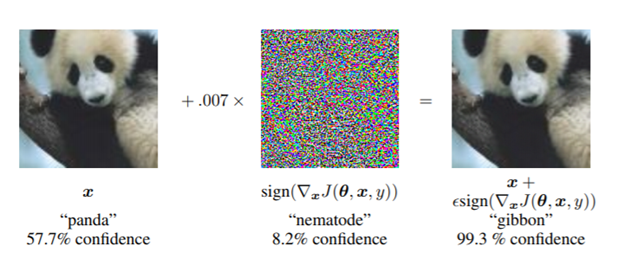Countering Adversarial Images Using Input Transformations: Difference between revisions
No edit summary |
|||
| Line 18: | Line 18: | ||
Below five image transformations techniques have been studied: | Below five image transformations techniques have been studied: | ||
- Image Cropping and Re-scaling ( Graese et al, 2016). | |||
2) Bit Depth Reduction (Xu et. al, 2017) | 2) Bit Depth Reduction (Xu et. al, 2017) | ||
3) JPEG Compression (Dziugaite et al, 2016) | 3) JPEG Compression (Dziugaite et al, 2016) | ||
Revision as of 19:49, 14 November 2018
Motivation
As the use of machine intelligence has increased , robustness has become a critical feature to guarantee the reliability of deployed machine-learning systems. However, recent research has shown that existing models are not robust to small , adversarial designed perturbations of the input. Adversarial examples are inputs to Machine Learning models that an attacker has intentionally designed to cause the model to make a mistake.The adversarial examples are not specific to Images , but also Malware, Text Understanding ,Speech. Below example (Goodfellow et. al), a small perturbation when applied to original image of panda, the prediction is changed to gibbon.
Hence an urgent need for approaches/defenses that increase the robustness of learning systems to such adversarial examples.
Introduction
The paper studies strategies that defend against adversarial-example attacks on image-classification systems by transforming the images before feeding them to a Convolutional Network Classifier. Generally, defenses against adversarial examples fall into two main categories - -Model Specific – They enforce model properties such as smoothness and in-variance via the learning algorithm. -Model-Agnostic – They try to remove adversarial perturbations from the input. This paper focuses on increasing the effectiveness of Model Agnostic defense strategies.
Below five image transformations techniques have been studied:
- Image Cropping and Re-scaling ( Graese et al, 2016). 2) Bit Depth Reduction (Xu et. al, 2017) 3) JPEG Compression (Dziugaite et al, 2016) 4) Total Variance Minimization(RUdin at al , 1992) 5) Image Quilting (Efros & Freeman , 2001).
These image transformations have been studied against Adversarial attacks such as - fast gradient sign method(Kurakin et al., 2016a), Deepfool (Moosavi-Dezfooli et al., 2016), and the Carlini & Wagner (2017) attack. The strongest defenses are based on Total Variance Minimization and Image Quilting: as these defenses are non-differentiable and inherently random which makes difficult for an adversary to get around them.
